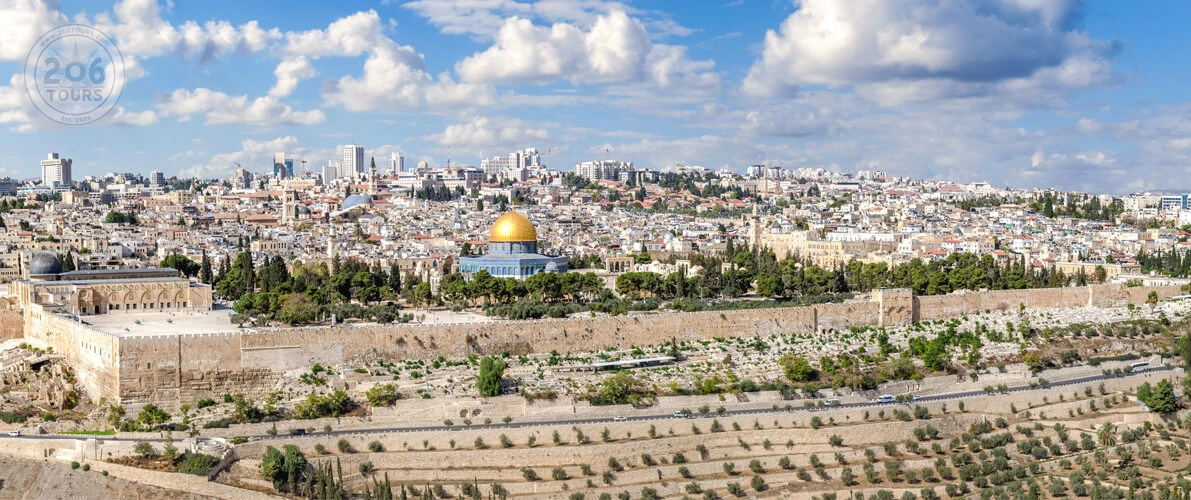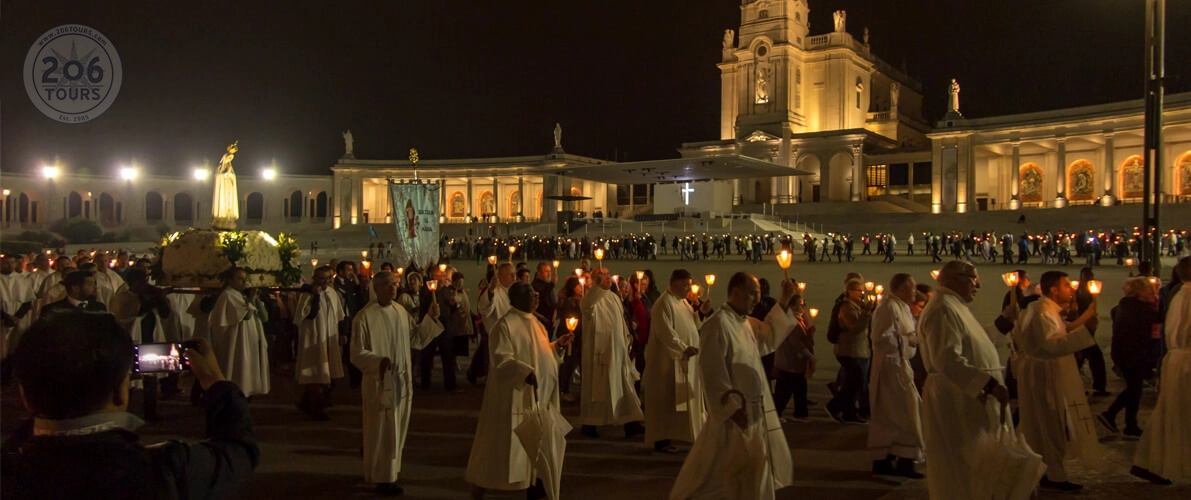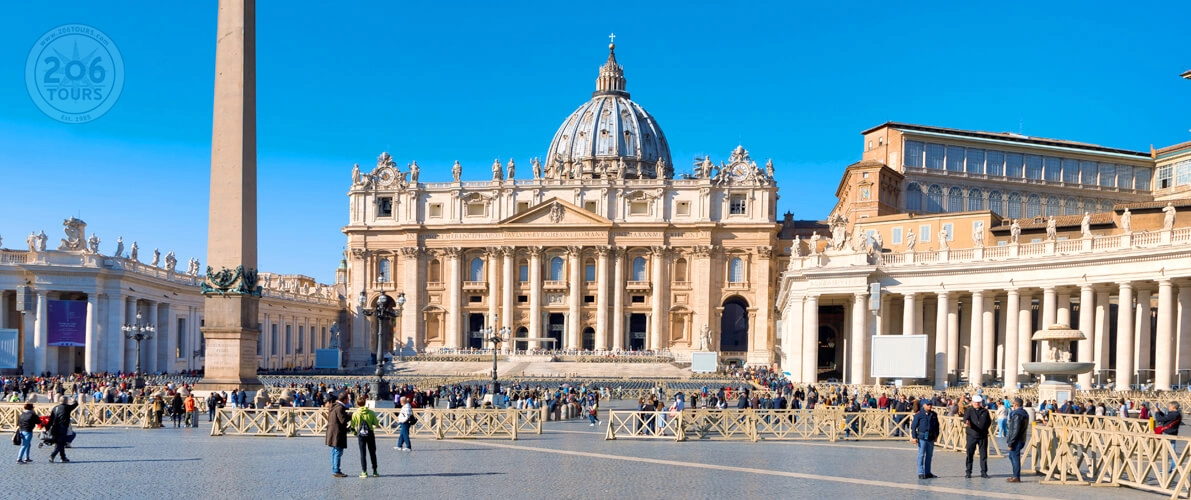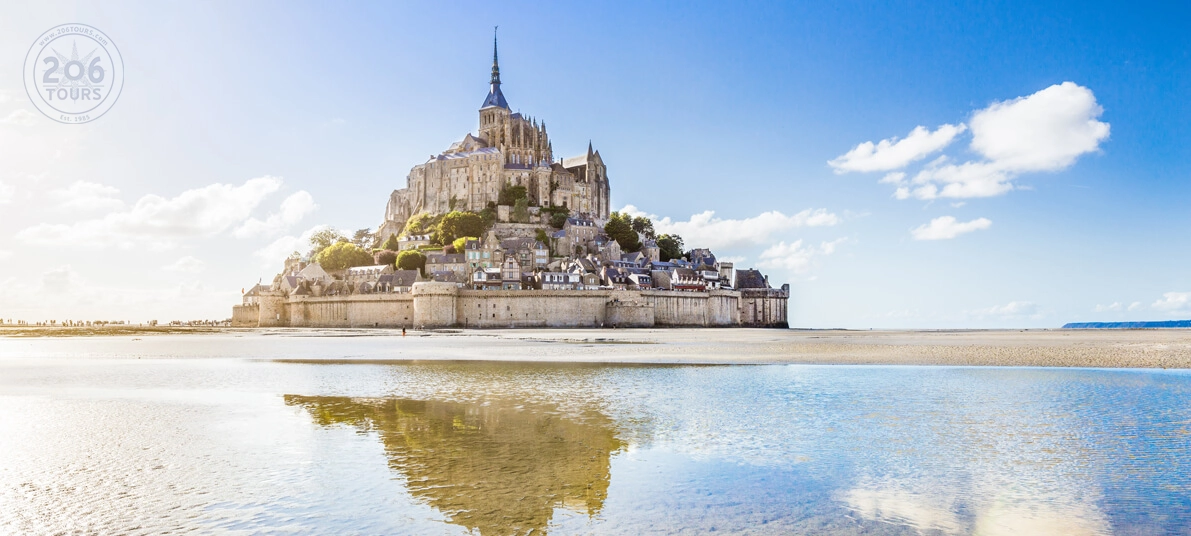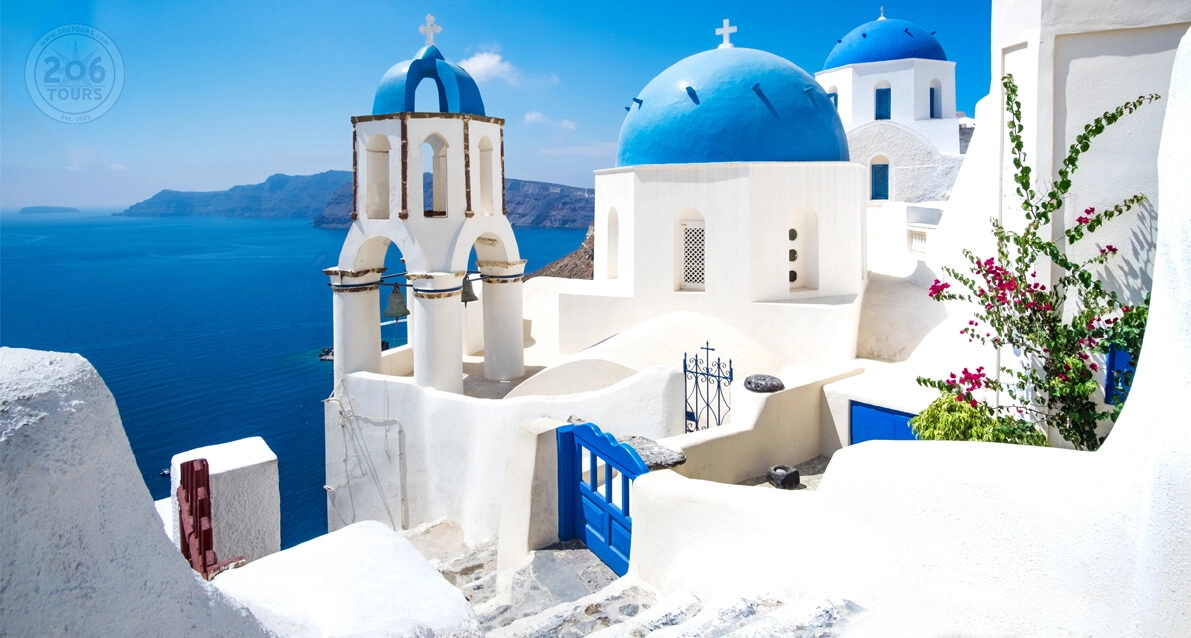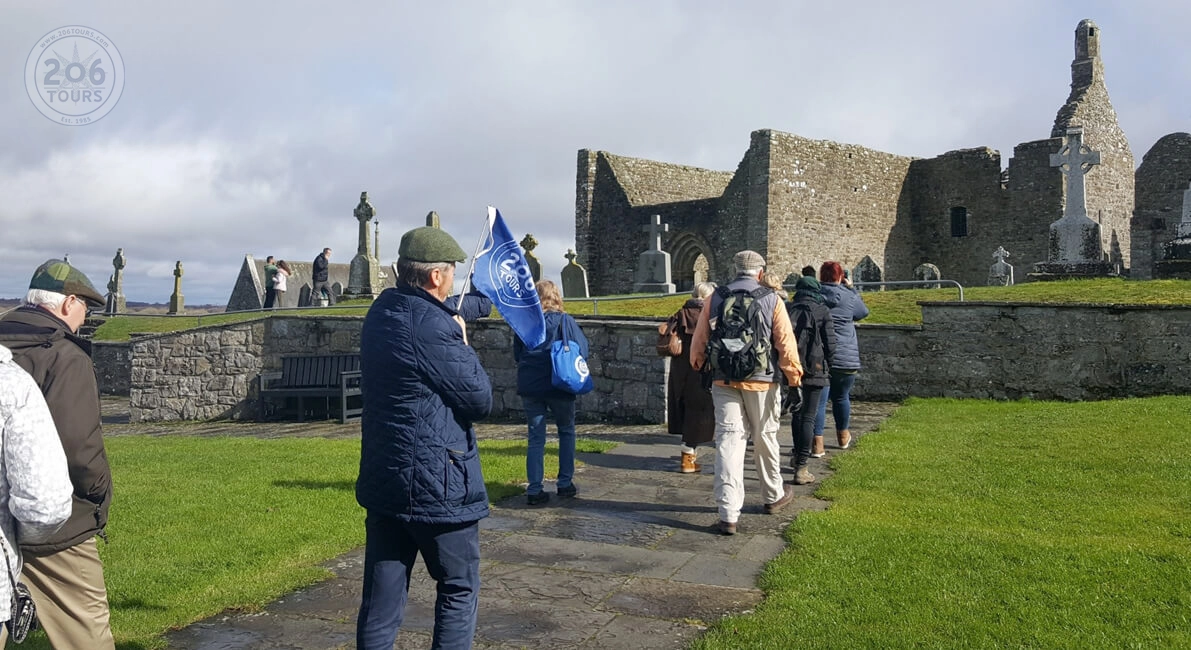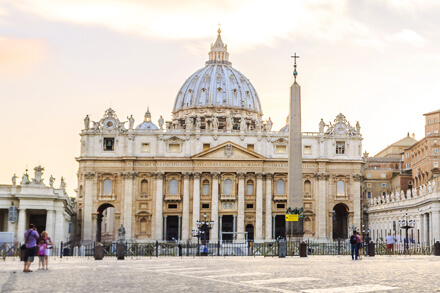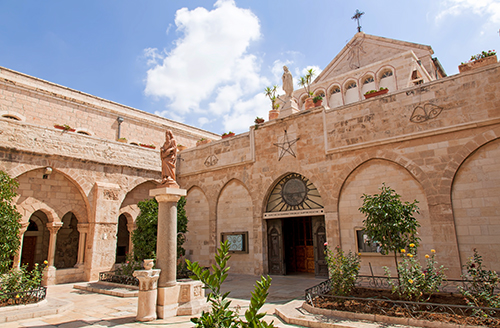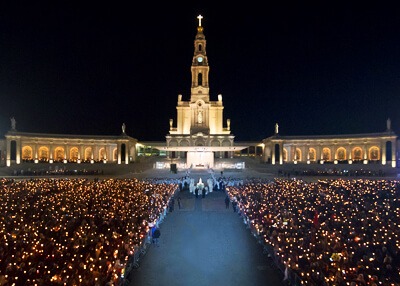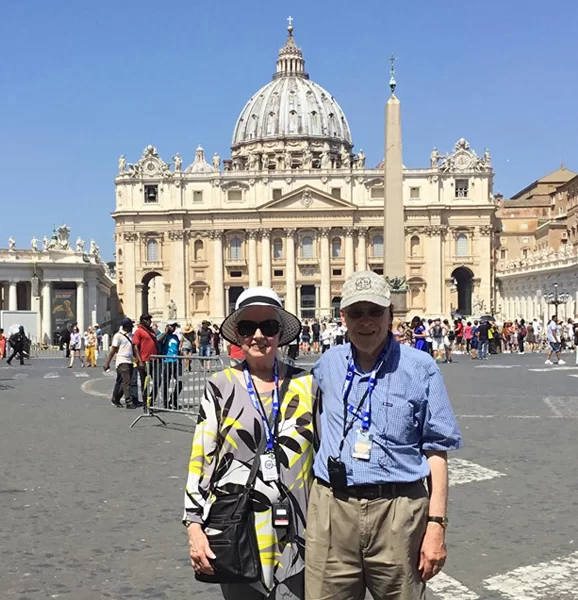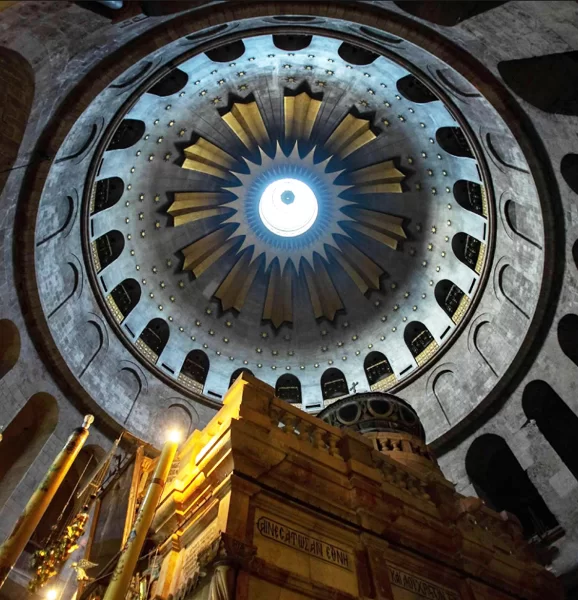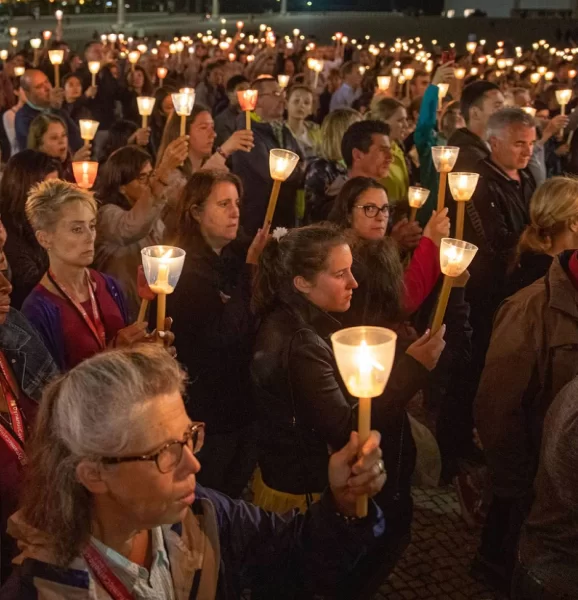Embarking on a Catholic pilgrimage is more than a travel endeavor; it’s a deep-rooted expression of faith and devotion, a testament to tradition, and a transformative journey that transcends time and borders. As pilgrims traverse sacred paths, they partake in a physical and emotional journey, strengthening their bond with the history, teachings, and core values of Catholicism.
Understanding Catholic Pilgrimages
In the realm of Catholicism, a pilgrimage is a conscious journey to a sacred place, fueled by a unique combination of spiritual aspiration, religious duty, and often personal penance or thanksgiving. These journeys are not undertaken for leisure or recreational purposes, but rather to deepen one’s understanding and appreciation of the faith. The goal may range from seeking intercessions, venerating saints, fulfilling religious promises, to participating in significant religious events. Pilgrimages serve as a tangible way to express one’s commitment to the faith. By physically moving from the ordinary surroundings of their lives to places of religious significance, pilgrims symbolically distance themselves from worldly distractions. This allows them to focus on prayer, contemplation, and the reaffirmation of their faith. The idea of pilgrimage is deeply rooted in Catholic tradition and mirrors the faith’s very essence. The concept of journeying towards a sacred goal echoes the life and teachings of various biblical figures. Abraham’s journey to the land of Canaan, Moses leading the Israelites through the desert, and above all, the life of Jesus Christ, represent spiritual pilgrimages that resonate with believers even today. Lastly, it’s important to remember that every pilgrimage is a personal journey as much as a communal experience. While each pilgrim may have their unique motivations and expectations, the collective expression of faith and shared spiritual experiences enhance the sense of belonging and unity within the Catholic community.
History of Catholic Pilgrimages
Historically, Catholic pilgrimages have been instrumental in shaping the cultural and religious landscapes across the world. The tradition can be traced back to the early centuries of the Church when followers began visiting sites associated with the life, death, and resurrection of Jesus Christ. These journeys held immense significance as they allowed the faithful to personally connect with the roots of their religion. During the Middle Ages, pilgrimages became increasingly popular, further cementing their place in Catholic life. Notable destinations such as Rome, Santiago de Compostela, and Jerusalem became primary pilgrimage sites, drawing believers from around the globe. These journeys often involved considerable hardship and risk, reflecting the pilgrims’ devotion and steadfastness. The tradition of pilgrimages underwent transformation with the onset of modernization. Improved transportation and living conditions have made these journeys more accessible to believers. Yet, the essence of the pilgrimage remains unaltered, continuing to inspire faith and dedication among Catholics. In the contemporary era, the practice of pilgrimage holds steadfast. It has not only survived but thrived, adapting to the needs of modern believers without losing its historical significance. Today’s pilgrims come from diverse walks of life, each bringing their unique perspectives and experiences, adding to the rich tapestry of Catholic pilgrimages.
Important Catholic Pilgrimage Sites
Today, the Catholic world is replete with pilgrimage sites, each holding a unique significance and history. These destinations have been sanctified by centuries of faith, reverence, and countless footprints of pilgrims.
Jerusalem, Israel
At the heart of the Holy Land, Jerusalem holds a special place in the Catholic faith. It is here that Jesus Christ spent his final days, was crucified, and resurrected – events that form the cornerstone of Catholic beliefs. The Church of the Holy Sepulchre, traditionally recognized as the site of Jesus’ crucifixion and resurrection, is the focal point for pilgrims. Visiting Jerusalem offers an opportunity to walk in Christ’s footsteps along the Via Dolorosa, reflect on His sacrifices, and reaffirm one’s commitment to the teachings of the Church. Despite the city’s tumultuous history and contemporary political challenges, it continues to draw pilgrims from around the world, serving as a beacon of faith and perseverance.
Vatican City, Rome
As the seat of the Roman Catholic Church and the residence of the Pope, Vatican City is undeniably one of the most significant pilgrimage destinations. St. Peter’s Basilica, standing on what is traditionally believed to be the burial site of St. Peter, is a monument to the Catholic faith. The Basilica and its magnificent square have witnessed numerous historic events, including the declaration of saints, and papal addresses. Visiting Vatican City is often likened to a journey to the heart of Catholicism. Pilgrims from all corners of the globe come to attend the Pope’s blessings, visit the vast Vatican Museums, and marvel at the Sistine Chapel’s exquisite frescoes. Despite its small geographical size, Vatican City holds a prominent place on the world’s religious map, symbolizing the enduring legacy and unity of the Catholic Church.
Loreto, Italy
In the charming town of Loreto, Italy, is the Sanctuary of the Holy House of Loreto, one of the most revered Marian shrines in the world. Tradition holds that the Holy House within the sanctuary is the very home in Nazareth where Mary was born, grew up, and received the Annunciation. Pilgrims travel to Loreto to venerate the Holy House and the beautiful statue of the Black Madonna. They attend Mass, pray the Rosary, and explore the stunning basilica that encases the Holy House. The lore and history associated with Loreto make it a significant destination in the global network of Marian pilgrimages. Whether it’s the tranquil setting of Saint Anne de Beaupré, the culturally rich atmosphere of San Juan del Valle, or the centuries-old tradition of Loreto, each of these pilgrimage sites provides a unique spiritual journey. The varied geographical locations and historical contexts of these sites offer a fascinating exploration of Catholic faith and devotion across the globe.
Lourdes, France
Lourdes, nestled in the foothills of the Pyrenees mountains in France, is a major center of Catholic pilgrimage. In 1858, a humble peasant girl named Bernadette Soubirous reported a series of visions of the Virgin Mary in the Massabielle grotto. These apparitions, recognized by the Catholic Church, transformed Lourdes into a beacon of faith and hope for millions. Pilgrims to Lourdes often participate in the candlelight processions, Mass celebrations, and ritual bathing in the waters of the Lourdes Spring, believed to possess healing properties. These communal rituals offer a deeply moving experience, fostering a sense of unity and shared faith. For those seeking physical healing or emotional solace, Lourdes stands as a testament to the power of faith and prayer.
The Sanctuary of Our Lady of La Salette, France
The Sanctuary of Our Lady of La Salette, situated in the French Alps, is where two children reportedly witnessed an apparition of the Virgin Mary in 1846. The message delivered during this apparition was one of reconciliation and conversion, and the sanctuary remains a place of pilgrimage for those seeking spiritual renewal.
Fatima, Portugal
Fatima, Portugal, gained worldwide attention following the apparitions of the Virgin Mary to three shepherd children in 1917. The Sanctuary of Our Lady of Fatima, built on the site of the apparitions, has become a focal point for Catholic devotion. Pilgrims flock to Fatima to attend Mass in the Chapel of the Apparitions, pray the Rosary in the expansive Prayer Area, and participate in the famous night-time processions. A visit to Fatima is often perceived as a step toward deeper reverence for the Virgin Mary and a unique opportunity to reflect on her messages of peace and faith.
Santiago de Compostela, Spain
The city of Santiago de Compostela in Spain is the terminus of the famed Camino de Santiago, also known as the Way of St. James. The pilgrimage routes stretch across Europe, all leading to the magnificent Cathedral of Santiago de Compostela, believed to house the remains of St. James the Apostle.
Undertaking the Camino de Santiago is as much a physical endeavor as it is a journey in faith. Walking the same paths that countless pilgrims have trodden over the centuries, individuals are offered an opportunity to detach from worldly distractions and delve into self-reflection and prayer. The end goal, the Cathedral, is not merely a final destination but a symbol of the spiritual fulfillment attained through the journey itself. Each of these sites – Lourdes, Fatima, and Santiago de Compostela – offer a unique spiritual journey, shaping the faith and experiences of Catholic pilgrims worldwide. These places stand as enduring reminders of the Church’s rich history, its community’s unshakeable faith, and the transformative power of pilgrimage.
The Basilica of Our Lady of Guadalupe, Mexico City
The Basilica of Our Lady of Guadalupe in Mexico City is one of the most visited Catholic pilgrimage sites in the world. According to tradition, in 1531, the Virgin Mary appeared to a native Mexican peasant named Juan Diego, leaving behind an image of herself imprinted miraculously on his cloak. This image, the iconic Our Lady of Guadalupe, is displayed in the Basilica and is venerated by millions each year. Visitors and pilgrims to the Basilica experience a rich blend of faith, history, and culture. Many attend Mass, pray in the serene ambience of the old and new Basilica, and admire the image of the Virgin Mary, the cherished symbol of Mexican Catholicism.
Jasna Góra Monastery, Poland
The Jasna Góra Monastery in Częstochowa, Poland, is a significant pilgrimage site due to its association with the revered icon of the Black Madonna. The icon, also known as Our Lady of Częstochowa, has a long history intertwined with the faith and identity of the Polish people. It is believed to possess miraculous powers and has been a beacon of hope during challenging times in Polish history. Pilgrims visiting Jasna Góra participate in Masses, pray before the sacred icon, and immerse themselves in the rich spiritual and cultural heritage that the site offers. The Pauline monastery, its treasury and library, and the surrounding fortifications also hold historical interest for visitors. The experience of Jasna Góra extends beyond religious devotion, resonating with a sense of national pride and resilience for many Polish Catholics.
Meteora, Greece
While not as widely known as other Catholic pilgrimage destinations, Meteora in Greece holds a special place due to its unique blend of natural beauty and spiritual heritage. The name ‘Meteora’ translates to ‘suspended in the air’, aptly describing the monasteries perched atop towering rock formations. While most of the monasteries are associated with Eastern Orthodox Christianity, the site is also a place of interest for Catholics due to the shared early Christian history. Pilgrims and visitors to Meteora have the opportunity to explore several monasteries, each offering breathtaking views and a glimpse into monastic life. The tranquility of Meteora provides a unique setting for reflection and prayer. While not a traditional Catholic pilgrimage site, Meteora represents an intersection of faiths and a shared appreciation for spiritual contemplation and monastic tradition. These additional pilgrimage sites, located in Poland and Greece, demonstrate the geographical and cultural diversity of Catholic pilgrimage locations. Whether you find yourself before the revered icon in Jasna Góra or amidst the sky-high monasteries of Meteora, the journey of a Catholic pilgrimage promises profound spiritual enrichment and a deeper connection with the universal Church.
Shrine of Saint Anne de Beaupré, Canada
The Shrine of Saint Anne de Beaupré in Quebec, Canada, has been a destination of devotion for Catholics since the 17th century. The shrine honors Saint Anne, the mother of Mary and grandmother of Jesus. Many pilgrims visit seeking her intercession, and the shrine is particularly noted for the numerous reported miracles associated with it, especially healings. Visitors to the Shrine of Saint Anne de Beaupré are treated to its remarkable architecture, attend Mass, venerate the statue of Saint Anne, and view the displays of crutches left behind by those who have reported being healed. The shrine stands as a testament to the deep faith and devotion of Catholic pilgrims.
Medjugorje, Bosnia and Herzegovina
Medjugorje, a small town in Bosnia and Herzegovina, emerged as an unexpected yet significant site of Catholic pilgrimage in the latter part of the 20th century. Since 1981, it has been reported that the Virgin Mary has been appearing and delivering messages of peace to six local individuals, known as the “visionaries”. Despite ongoing investigations and debates within the Church regarding the authenticity of these apparitions, Medjugorje has drawn millions of pilgrims from around the world. Those journeying to Medjugorje typically participate in evening prayer programs, which include the Rosary, Mass, and blessings. Many climb the Apparition Hill, where the first apparitions were reported, and Cross Mountain, engaging in prayer and reflection along the way. The experience of Medjugorje is often described as deeply peaceful, encouraging an inner transformation of the heart. In each of these diverse pilgrimage sites – from Canada’s Shrine of Saint Anne de Beaupré to the unexpected spiritual hub of Medjugorje – the journey of a Catholic pilgrimage invites the faithful into a rich tapestry of devotion, history, and community. Embarking on such a journey can bring deeper meaning to one’s faith, making tangible the scriptures, saints, and sacred traditions that form the bedrock of Catholicism.
The Holy Family’s Journey in Egypt
The journey of the Holy Family – Joseph, Mary, and Jesus – in Egypt is a significant narrative in the Bible and is commemorated by several pilgrimage sites scattered across the country. According to the Gospel of Matthew, the Holy Family fled to Egypt to escape King Herod’s decree to kill all male infants in Bethlehem.
Pilgrims follow the Holy Family’s route, which includes significant stops such as the ancient city of Cairo, where the Tree of the Virgin Mary in Matariya is believed to have offered shelter to the family. The Saint Sergius and Bacchus Church, also in Cairo, is traditionally considered to be built over a cave where the Holy Family stayed. Another revered site is the Monastery of Al-Muharraq in Assiut, which is believed to mark the geographic center of Egypt and where the Holy Family supposedly resided for over six months. Each of these locations offers pilgrims a chance to reflect on the Holy Family’s experiences, drawing parallels to their journey of faith. These unique pilgrimage sites – from the serene town of Medjugorje to the historical paths of the Holy Family in Egypt – highlight the Catholic faith’s deep roots and broad reach. A pilgrimage offers a transformative journey, not only guiding one’s steps to sacred sites but also steering one’s heart towards greater spiritual understanding and connection.
Croagh Patrick, Ireland
Croagh Patrick, often known as ‘The Reek’, is a renowned Catholic pilgrimage site in County Mayo, Ireland. St. Patrick, Ireland’s patron saint, is said to have fasted and prayed at the summit of this mountain for forty days in 441 AD. This historic act of devotion has drawn pilgrims to Croagh Patrick for centuries.
Each year, especially on Reek Sunday (the last Sunday in July), thousands of pilgrims ascend the rocky trail to reach the chapel at the mountain’s summit. Many undertake this challenging trek barefoot, as a penance or a reflection of their faith. The panoramic views from the top, combined with the spiritual significance of the climb, make this a unique and rewarding pilgrimage experience.
Knock Shrine, Ireland
As mentioned earlier, Knock Shrine, located in County Mayo, Ireland, is a significant Catholic pilgrimage site. In 1879, fifteen villagers reported seeing an apparition of the Virgin Mary, St. Joseph, and St. John the Evangelist, along with a Lamb and cross on an altar, on the gable wall of the local church.
Today, pilgrims visit Knock Shrine to attend Mass at the Apparition Chapel, pray at the outdoor Stations of the Cross, or participate in organized religious events. The tranquil setting of Knock provides a space for reflection and prayer, fostering spiritual growth. From the rugged slopes of Croagh Patrick to the peaceful grounds of Knock Shrine, Ireland offers pilgrimage experiences steeped in the rich history of the Catholic faith. A pilgrimage to these sacred sites provides an opportunity to connect with the heart of Irish Catholicism, understanding its history, experiencing its rituals, and deepening one’s personal faith journey.
Bethany Beyond the Jordan, Jordan
Bethany Beyond the Jordan, also known as Al-Maghtas, is one of the most significant Christian pilgrimage sites in Jordan. This location on the east bank of the Jordan River is traditionally believed to be the site where John the Baptist baptized Jesus Christ, marking the beginning of Jesus’s public ministry. Pilgrims to Bethany Beyond the Jordan have the opportunity to visit the baptismal site, participate in a renewal of baptismal vows, and visit several ancient churches, monasteries, and hermitages in the area. The pilgrimage offers a chance to connect with the early beginnings of Christianity and reflect on the significance of baptism as a sacrament.
Mount Nebo, Jordan
Mount Nebo, another important Christian pilgrimage site in Jordan, is traditionally believed to be the place where Moses was granted a view of the Promised Land before he died. The Moses Memorial Church at the summit houses some well-preserved mosaics, a testament to the site’s ancient Christian heritage. Pilgrims to Mount Nebo can take in the same panoramic views that tradition says Moses saw, which on clear days extend to the Dead Sea, Jerusalem, and Bethlehem. The visit invites contemplation on the themes of promise, fulfillment, and the transition from one testament to another in the biblical narrative. Whether walking in the footsteps of Jesus at Bethany Beyond the Jordan or gazing across the holy lands from Mount Nebo, Jordan offers deeply historic and spiritual pilgrimage experiences. These sites, revered for centuries, invite modern-day pilgrims to connect with the roots of their faith, finding personal meaning in these age-old narratives.
The Shrine of the Three Kings, Germany
Located in Cologne, Germany, the Shrine of the Three Kings is a large reliquary considered to contain the bones of the Biblical Magi, also known as the Three Wise Men. The relics have made the Cologne Cathedral a significant destination for pilgrimage since the Middle Ages.
Whether you are considering embarking on your first Catholic pilgrimage or are a seasoned traveler in faith, understanding the history, significance, and varied destinations of Catholic pilgrimages is an enriching experience. Remember, a pilgrimage is more than a journey of miles; it’s a journey of the heart, leading you closer to the core of your faith and tradition. May your path be blessed, and your journey, fulfilling.



